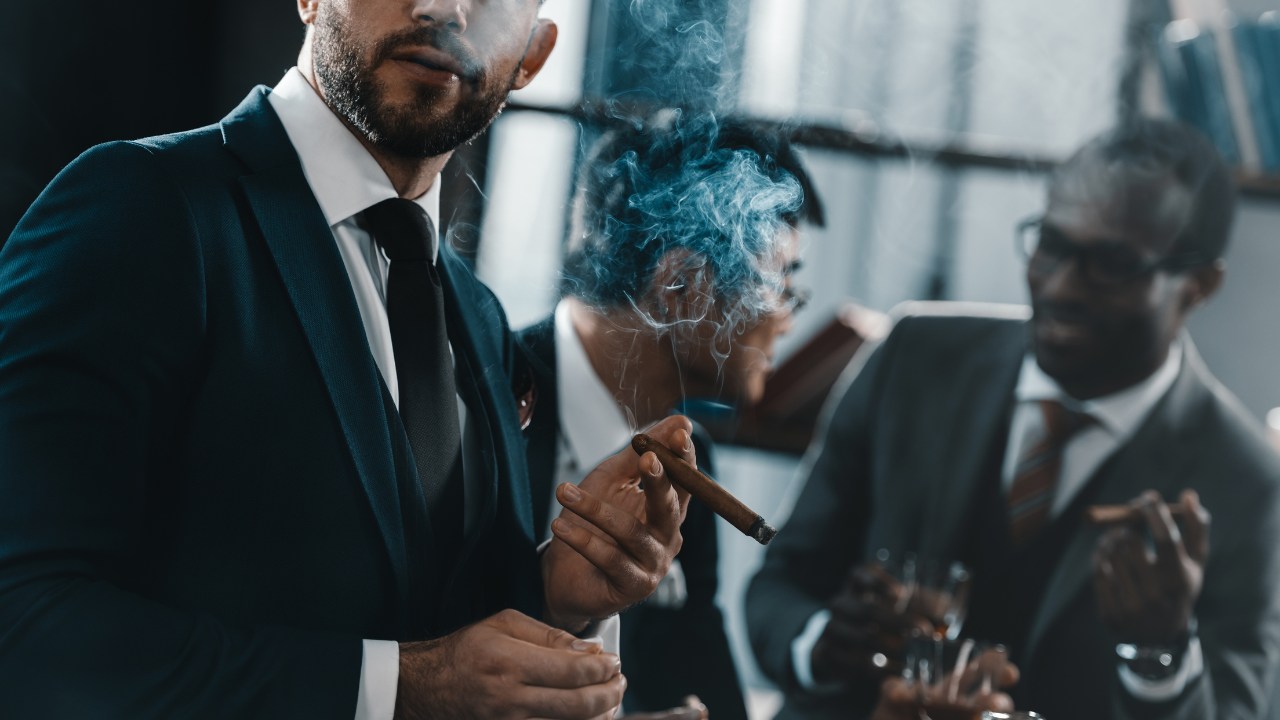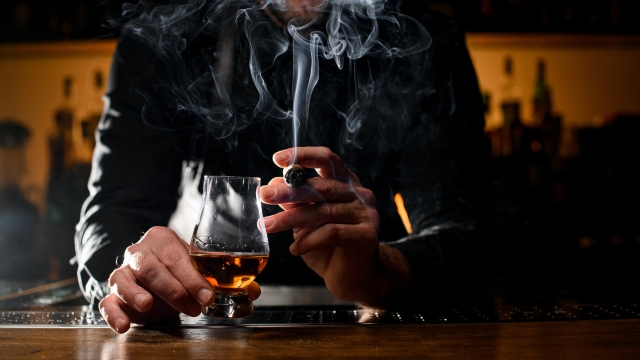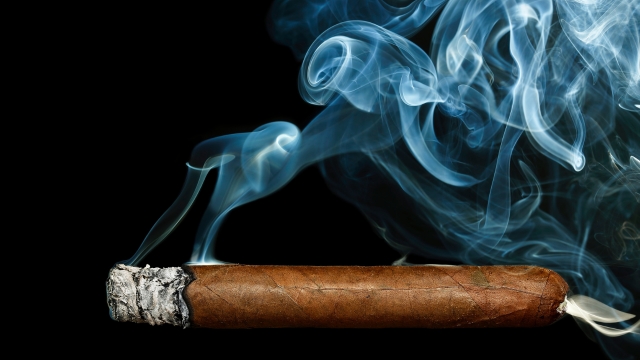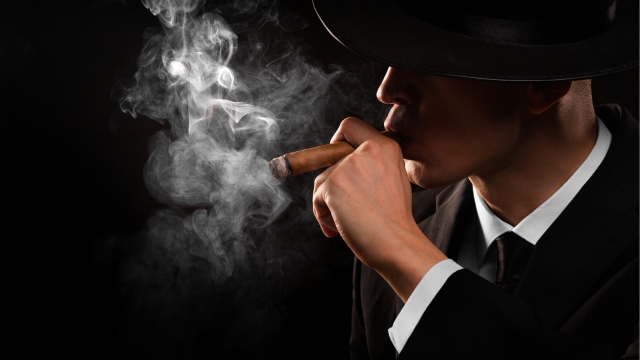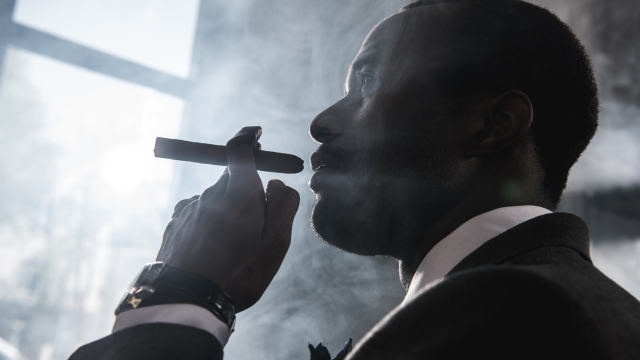Cigar smoking has long been associated with sophistication and pleasure, but many people wonder, “Why can’t you inhale cigars?”
Not inhaling cigar smoke allows aficionados to appreciate their complex flavors, aromas, and craftsmanship while avoiding health risks. Cigar smoke contains a higher concentration of nicotine than cigarettes, which can lead to nicotine overdose if inhaled.
We’ll delve into details, the reasons behind this practice, the risks and benefits of not inhaling, and how to savor the complex flavors and aromas of a premium cigar without inhaling.
Key Takeaways
- Inhaling cigar smoke carries the same risks as cigarette smoke and should be avoided to reduce health hazards.
- Refraining from inhaling and smoking mild cigars can help avoid nicotine dependence while still enjoying premium cigars with their flavors and aromas through retro-haling.
- Cigar smoking etiquette involves being mindful of social context and local laws, respecting craftsmanship & taking care not to damage the cigar.
Introduction
When it comes to cigar smoking, one of the most noticeable differences between cigar smokers and cigarette smokers is that the former typically doesn’t inhale cigar smoke. Inhaling cigars is not a good idea because they contain high levels of nicotine and harmful toxins. Unlike cigarettes, cigars have a more concentrated and alkaline tobacco, leading to stronger smoke that can irritate the lungs and increase the risk of respiratory issues, lung cancer, and heart disease. Additionally, cigar smoke is meant to be savored in the mouth rather than inhaled, as deep inhalation can intensify health risks.
Cigar smokers usually emphasize the flavors and scents, an experience that does not necessitate cigar smoke inhalation. Furthermore, the optimal method for smoking a cigar correctly is by not directly inhaling the smoke but by retrohaling.
This approach allows cigar smokers to enjoy the complexity of cigar blends and the aromas and bouquets of the smoke without exposing themselves to the health risks associated with inhalation.
Risks Associated with Inhaling Cigar Smoke
When you inhale cigar smoke, it could cause health hazards and nicotine addiction. It carries serious health risks, even if you did not inhale cigar smoke. In addition, secondhand smoke can also be harmful to others.
Moreover, cigars contain nicotine, which can be just as addictive as cigarettes when you smoke into your mouth. Consequently, the body craves nicotine, and this can lead to addiction. Additionally, cigarette smokers may find it difficult to not inhale cigars because they’re accustomed to inhaling cigarette smoke.
However, unlike cigarettes, the best way to avoid cancer-related diseases from cigars is to refrain from smoking and cease instantly if already practicing the habit.
Respiratory and Health Implications
Inhaling cigar smoke, a form of tobacco smoke increases the risk of lung cancer, COPD, asthma, and other health risks and respiratory issues. Furthermore, it’s denser and unfiltered, which can result in heightened exposure to toxins and carcinogens that lead to gum disease when you constantly smoke into your mouth.
Moreover, unlike cigarettes, large cigars burn differently, producing more smoke, intensifying these risks. In contrast, cigarettes burn more consistently but still pose health risks.
Avoidance of Nicotine Dependence
Nicotine dependence is a form of addiction characterized by physical and psychological dependence on nicotine when users inhale cigar smoke regularly. Consequently, symptoms include cravings, anxiety, irritability, restlessness, difficulty concentrating, depressed mood, frustration, anger, increased hunger, insomnia, constipation, and weight gain.
Moreover, these symptoms can interfere with enjoying a cigar aficionado with premium cigars. To prevent nicotine addiction, it’s suggested to refrain from inhaling cigar smoke. Smoking a mild cigar may also help reduce nicotine intake, allowing cigar smokers to enjoy the experience without the risks.
Tobacco Composition and Cigar Construction
A cigar comprises three main components: the wrapper, binder, and filler. These components are crafted from tobacco leaves; the cigar packaging often highlights their composition.
Notably, the tobacco and cigar construction play a significant role in the reasons for not inhaling cigar smoke. Unlike cigarettes, a premium handmade cigar is composed of natural tobacco leaves, leading to thicker, hotter smoke that can be uncomfortable if you inhale cigar smoke quickly.
Higher Nicotine Content
Cigars may contain up to 100-200 milligrams of nicotine, with some having as much as 400 milligrams. Consequently, inhaling cigar smoke can increase the risk of nicotine dependence.
Moreover, the higher nicotine content in tobacco smoke has been linked to increased addiction potential, cardiovascular disease risk, and cancer risk.
However, it also corresponds with a more robust flavor and a prolonged smoking experience, commonly found in premium cigars.
Thicker and Unfiltered Smoke
Premium handmade cigars are crafted from natural tobacco leaves, which can lead to thicker, hotter smoke. Therefore, for an ideal cigar-smoking experience, it’s recommended not to inhale cigar smoke but rather take gentle puffs to relish the flavors and scents on the palate. Moreover, cigars typically contain more nicotine than cigarette smoke due to their larger size and the use of whole tobacco leaves.
Furthermore, inhaling cigar smoke can pose serious health risks, such as increased cancer risk, respiratory illnesses, and nicotine dependence. Consequently, by not inhaling, cigar smokers can appreciate the unique sensory experience of cigar smoke without exposing themselves to these risks.
Flavor Appreciation in Cigars
Large cigars can be characterized by various flavors, including earthy, spicy, sweet, nutty, floral, citrusy, fruity, and chocolatey.
Appreciating these flavors does not require you to inhale cigar smoke. Instead, cigar smokers usually take a few short puffs and exhale through their noses. This technique, known as retrohale, allows the smoker to experience the aromas and flavors without inhaling the cigar smoke.
Complexity of Cigar Blends
Cigar blends are complex due to the combination of various types of tobacco leaves from distinct regions, each possessing its own distinct flavor profile. They’re used to create the filler, binder, and wrapper components.
Aromas and Bouquet
The aromas and bouquets of cigars can vary depending on the type and quality. Excellent quality cigars possess inviting aromas that can fill the room. Some common aromas include sweetened hickory, leather, mesquite, pepper, and cedar.
Furthermore, the bouquet, or aroma, smells like a burning cigar. It’s an essential part of the experience, as they can improve the flavor and create a distinct sensory journey as you retrohale.
Techniques for Non-Inhalation
Different puffing and exhaling strategies can be utilized to appreciate cigars without inhaling the cigar smoke. However, the techniques may be hard to follow by those who are used to inhale cigarettes and are new to cigars.
Mastering these non-inhalation strategies can elevate the entire cigar smoking experience, enabling cigar smokers to relish the intricacy of cigar blends and the scents and bouquets of cigar smoke while avoiding the health hazards of inhalation.
Proper Puffing
The fundamental concept of correct puffing is to smoke into your mouth by drawing slow, shallow breaths and to abstain from inhaling cigar smoke, unlike when you inhale cigarettes. It’s of utmost importance, as it can significantly influence flavor and intensity.
In addition, the advantages of appropriate puffing of cigars include an enhanced experience, improved flavor, and reduced nicotine intake from cigar smoke.
Exhaling Techniques
Exhaling techniques refer to methods employed to prevent inhalation of cigar smoke after you smoke into your mouth. Some retrohale techniques for cigars include pursed lip breathing, diaphragmatic breathing, breath focus technique, Lion’s breath, alternate nostril, and equal breathing.
Implementing these retrohale techniques can mitigate the potential risks associated with large cigar smoke inhalation, including respiratory and health implications and nicotine dependence.
Also read
Savoring Every Puff: How Long Do Cigars Last and What Factors Influence Their Lifespan?
Cigar Smoking Etiquette
Similar to cigarettes, cigar smoking etiquette encompasses a range of norms and directives to be followed when smoking a large cigar. This includes being mindful of the social context and respecting the craftsmanship of the cigar.
Social Considerations
Cigar smoking involves socializing, collecting, and trying different cigars and the availability of flavored cigars. However, it’s essential to know that this habit is still linked to health risks, just like when you inhale cigarettes.
Moreover, by not inhaling cigar smoke, cigar smokers can appreciate the flavors and aromas without exposing themselves to these risks. Additionally, consuming CBD products that stay in your system for a long time may help mitigate the health risks from cigarettes and cigars.
Furthermore, being aware of the social implications can help create a more enjoyable experience for all involved. Avoid smoking in areas where cigarettes and little cigars are not permitted. Additionally, note that cigar lounges are available for aficionados, and some hookah bars even offer cigars.
Lastly, refrain from cigar smoking near individuals who do not wish to inhale cigarettes and cigar smoke. Be mindful of the amount of cigar smoke produced by the tobacco product.
More importantly, note that the Federal Trade Commission prohibits cigarettes and cigars sold to middle school students, even little cigars. Cigar and cigarettes burn harshly and have detrimental effects on young adults as they inhale the smoke.
Respecting the Craftsmanship
The craftsmanship of premium handmade cigar production involves careful hand-rolling and crafting using only 100% tobacco leaves. Consequently, demonstrating respect for the craftsmanship involves avoiding damaging the cigar. For example, by not cutting too much of the wrapper, not over-puffing as you smoke into your mouth, and not over-lighting the cigar.
Moreover, cigar smokers can further appreciate the unique sensory experience by respecting the artistry behind cigar-making. Additionally, this allows them to acknowledge the hard work and dedication that goes into creating each premium cigar.
Final Thoughts
Smoking cigars is pleasurable without necessitating inhalation. The cultural and sensory aspects, such as appreciating the craftsmanship, savoring the complex flavors and aromas, and observing proper etiquette, make it a distinct and enjoyable experience.
Recognizing the advantages of non-inhalation compared to when you inhale cigars allows for thorough enjoyment of the realm of premium cigars.
Also read:
Cigar Aficionado’s Playbook: How to Smoke Cigars and Appreciate the Experience
Related Questions
Still have questions? Check out a couple of common ones below:
What happens if you inhale cigars?
When you inhale cigars, it can increase the risk of lung diseases (emphysema, lung cancer, chronic bronchitis), low birth weight, oral cavity, larynx, and esophagus. A tobacco product and cigarette smoke can also cause coronary heart disease, leading to a coughing fit for cigar and cigarette smokers as they inhale cigar smoke.
Why do athletes smoke cigars?
Many athletes who are also cigarette smokers choose tobacco use as a way to relax and de-stress, celebrate special occasions, or simply for the delicious taste of cigar smoke and pleasant experience as they inhale the flavors. This is just as true for professional athletes as it is for regular cigar enthusiasts who like full-bodied cigars.



